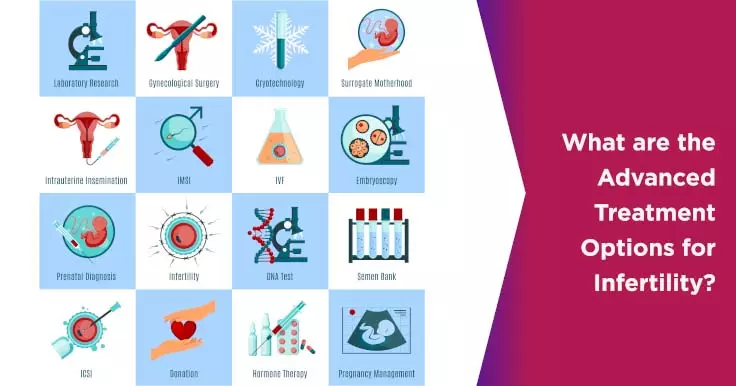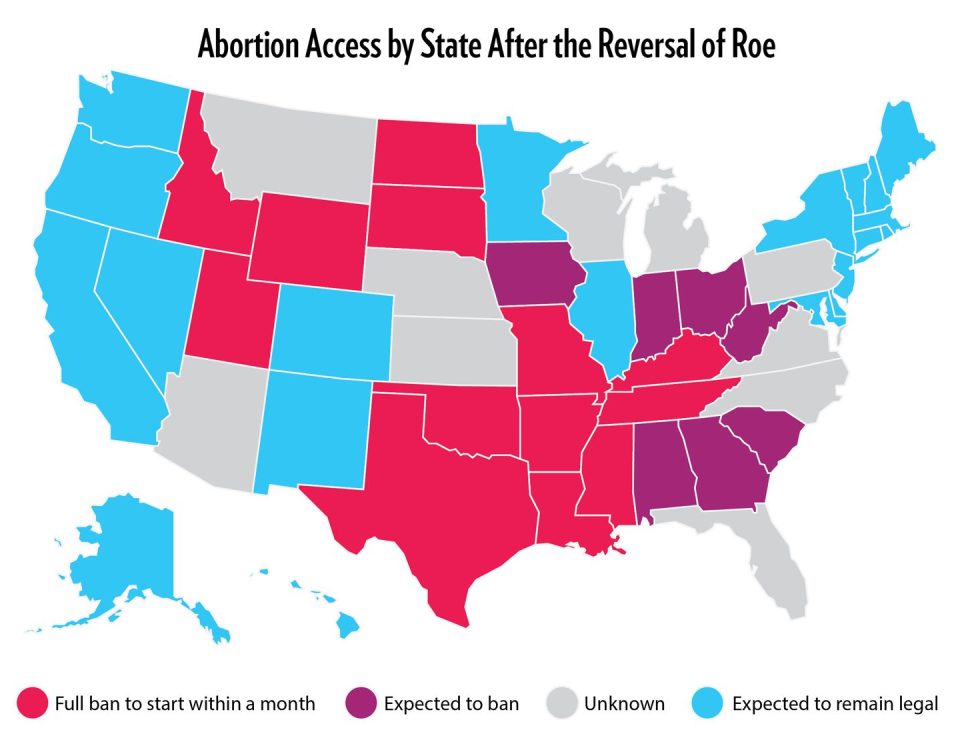
What Is IVF? Your Complete Guide to In Vitro Fertilization
April 16, 2025
What Was in the IVF Bill? A Deep Dive into the Fight for Fertility Rights
April 16, 2025What Insurance Covers IVF: Your Guide to Fertility Treatment Coverage
Navigating the world of insurance can feel like trying to solve a puzzle with missing pieces—especially when it comes to something as personal and life-changing as in vitro fertilization (IVF). If you’re dreaming of starting a family but worried about the costs, you’re not alone. IVF can set you back thousands of dollars per cycle, and for many, insurance is the key to making it affordable. But what insurance actually covers IVF? How do you know if your plan will help, and what can you do if it doesn’t? This guide is here to break it all down for you—think of it as your friendly roadmap to understanding IVF coverage, packed with tips, real-life insights, and the latest info to help you take the next step.
Why IVF Coverage Matters More Than Ever
IVF isn’t cheap. A single cycle can cost anywhere from $15,000 to $30,000, depending on where you live, the clinic you choose, and extras like medications or genetic testing. For most people, that’s a huge chunk of change—sometimes more than a year’s rent or a new car. And since it often takes more than one try to get pregnant (about 30% of women under 35 succeed on their first cycle, according to the CDC), those costs can pile up fast.
Insurance can be a game-changer here. When it covers IVF, it slashes out-of-pocket expenses, making the dream of parenthood feel less like a financial mountain to climb. But here’s the catch: not all insurance plans are created equal. Some cover everything from egg retrieval to embryo transfer, while others barely touch fertility treatments. With more couples turning to IVF—over 86,000 babies were born this way in the U.S. in 2021 alone, per the Department of Health and Human Services—knowing what your insurance offers is more important than ever.
The Basics: Does Insurance Cover IVF?
So, does your insurance cover IVF? The short answer: it depends. In the U.S., there’s no nationwide rule saying insurance has to cover fertility treatments. Instead, it’s a patchwork system—some states require it, some don’t, and even then, your specific plan might have its own rules. Let’s break it down.
State Mandates: Where You Live Makes a Difference
As of April 2025, 21 states plus Washington, D.C., have laws about infertility coverage, but only 15 of them specifically require insurance to cover IVF. These states are:
- California
- Connecticut
- Delaware
- Hawaii
- Illinois
- Louisiana
- Maryland
- Massachusetts
- New Hampshire
- New Jersey
- New York
- Ohio
- Rhode Island
- Texas
- West Virginia
If you live in one of these places, you’re in luck—sort of. These mandates usually apply to private insurance plans (think employer-provided ones), but there are loopholes. For example, small businesses with fewer than 50 employees might be exempt, and self-insured plans (where your employer pays claims directly) often dodge these rules too. California’s new law, signed in September 2024, is a big win—it requires large group plans to cover up to three egg retrievals and unlimited embryo transfers, helping about 9 million people. But if you’re on Medi-Cal or work for a religious employer, you’re still out of the loop.
Employer Plans: The Wild Card
Even if your state doesn’t mandate IVF coverage, your job might offer it anyway. Big companies like Google, Apple, and Starbucks have been adding fertility benefits to attract talent—36% of employers with 500+ workers covered IVF in 2021, up from 27% the year before, according to a Mercer survey. Smaller companies are jumping on board too, especially in competitive job markets. But here’s the thing: it’s totally up to your employer. If they don’t see IVF as a priority, you might be stuck with nothing.
Public Insurance: Slim Pickings
If you’re on Medicaid or Medicare, don’t hold your breath. Medicaid, which covers low-income folks, only requires infertility coverage in one state—New York—and even then, it’s limited. Most states offer little to no help for IVF through public plans. Medicare, for people 65+ or with disabilities, doesn’t cover it either, since it’s not designed for fertility. Bottom line: public insurance isn’t your best bet here.
What’s Typically Covered (and What’s Not)
Okay, so let’s say your insurance does cover IVF. What does that actually mean? Coverage varies, but here’s what you might see:
✔️ Covered:
- Egg retrieval (surgery to get eggs from your ovaries)
- Sperm collection and lab fertilization
- Embryo transfer (placing the embryo in the uterus)
- Medications (like hormone shots to boost egg production)
- Basic lab tests (bloodwork, ultrasounds)
❌ Not Covered (Usually):
- Donor eggs or sperm (if you need them)
- Surrogacy costs (if someone else carries the baby)
- Freezing eggs or embryos for later (cryopreservation)
- Experimental add-ons (like preimplantation genetic testing, or PGT)
Some plans cap how much they’ll pay—like $15,000 lifetime in Arkansas or $100,000 in Maryland. Others limit you to a set number of cycles (say, three tries). And even if IVF is covered, you might still owe copays or hit your deductible first.
Quick Quiz: Does Your Plan Cover IVF?
Take a sec to check your odds. Answer these, then tally your “yes” answers:
- Do you live in one of the 15 states with IVF mandates? (Yes/No)
- Does your employer have 50+ workers and offer health benefits? (Yes/No)
- Have you heard your company mention fertility perks? (Yes/No)
- 3 Yeses: Great chance your plan covers IVF!
- 1-2 Yeses: Maybe—dig into your policy.
- 0 Yeses: Probably not, but keep reading for options.
How to Find Out If Your Insurance Covers IVF
Figuring out your coverage isn’t always easy—insurance documents can read like a foreign language. But don’t worry, you’ve got this. Here’s a step-by-step guide to get answers:
- Check Your Plan Docs
Grab your insurance handbook or log into your online portal. Look for sections on “infertility,” “fertility treatments,” or “IVF.” Words like “covered services” or “exclusions” are your clues. - Call Your Insurance Company
Dial the number on your insurance card and ask: “Does my plan cover IVF, and if so, what’s included?” Have a pen ready—sometimes they throw a lot at you. - Talk to HR
If you get insurance through work, your HR team might know more. Ask if fertility benefits are part of the package or if they’re planning to add them. - Visit a Fertility Clinic
Many clinics have financial advisors who’ll check your insurance for free. They deal with this stuff daily and can spot coverage you might miss.
Pro Tip: Record the date, time, and name of whoever you talk to. Insurance reps sometimes give conflicting info, and notes can save you a headache later.
When Insurance Says No: What’s Next?
If your insurance doesn’t cover IVF, don’t lose hope. There are ways to make it work without breaking the bank. Here’s what real people do:
Option 1: Switch Plans or Jobs
Sounds drastic, but hear me out. If you’re in an open enrollment period (usually late fall), see if your employer offers a plan with IVF coverage. Or, if you’re job hunting, look for companies bragging about fertility benefits—think tech firms or big retailers. One couple I know switched to a job at a hospital chain just for the IVF perks, and it paid off with twins two years later.
Option 2: Move to a Mandate State
Okay, this one’s a stretch for most, but it’s worth mentioning. States like Massachusetts and New Jersey have some of the best IVF coverage laws—clinics there do 1.5 times more cycles per person than the national average, per CDC data. If you’re near a border or planning a move anyway, it could tip the scales.
Option 3: Financing and Grants
No coverage? No problem—sort of. Clinics often partner with lenders like Future Family or ARC Fertility to spread out payments. Interest rates vary, so shop around. There are also grants—RESOLVE lists dozens, like the Baby Quest Foundation, which awards up to $15,000. Apply early; they’re competitive.
Option 4: Negotiate or Shop Around
Clinics sometimes offer discounts if you pay upfront or bundle cycles (like $25,000 for three tries). Prices also differ by location—a cycle in New York City might cost double what it does in rural Ohio. Call a few places and ask about specials.
The Hidden Costs of IVF (Even With Insurance)
Here’s something not everyone talks about: even with insurance, IVF can still hit your wallet. A 2022 NPR story followed a couple in Florida who thought their $2,700 out-of-pocket max would cover it. Surprise—they paid $500 extra for an out-of-network lab and racked up travel costs for a clinic 3½ hours away. Here’s what to watch for:
- Medications: $3,000-$5,000 per cycle, sometimes only partly covered.
- Travel: Gas, hotels, or flights if your clinic’s far.
- Time Off Work: Lost wages if you don’t have paid leave.
- Add-Ons: PGT or embryo freezing can add $2,000-$5,000.
Hack: Ask your clinic for generic meds or samples—some keep extras for patients in need.
The Latest Trends: What’s Changing in 2025
IVF coverage is evolving fast, and 2025 is shaping up to be a big year. Here’s what’s hot:
More States Jumping In
California’s 2024 law is inspiring others. New Jersey expanded coverage in January 2024 to include state employees, and British Columbia just launched a public IVF program in March 2025, funding one cycle up to $19,000. Posts on X show people buzzing about these shifts, with some calling it a “game-changer for families.”
Employers Stepping Up
A KFF report from October 2024 says more companies are adding IVF to stay competitive—especially after the tight labor market of the past few years. One X user raved about their new job at a tech startup covering three cycles, saying, “It’s why I said yes to the offer.”
Political Push
IVF hit the headlines during the 2024 election, with candidates like Trump promising federal coverage (though experts doubt it’ll happen soon). The “Right to IVF Act” failed in Congress twice, but it’s keeping the conversation alive. If it passes, it could force private plans to cover fertility treatments nationwide.
Real Stories: How Coverage Shapes Lives
Numbers are one thing, but stories bring it home. Take Sarah, a 32-year-old teacher in Illinois. Her state mandates IVF coverage, so her $20,000 cycle cost her just $1,500 out of pocket. “Without insurance, we’d still be saving,” she says. “It gave us our son.”
Then there’s Mike and Jen in Alabama, where there’s no mandate. After a 2024 court ruling called embryos “children,” some clinics paused IVF, and their insurance wouldn’t touch it anyway. They drained $40,000 from savings for two cycles—still no baby. “It’s like the system’s against us,” Jen sighs.
These gaps show why coverage matters. It’s not just money—it’s hope, stress, and sometimes the difference between a family or not.
IVF Coverage Around the World: A Quick Peek
The U.S. isn’t alone in this struggle, but we’re behind some countries. Sweden covers three cycles for women under 40 at almost no cost. In Australia, Medicare chips in, cutting a $10,000 cycle to about $4,000. Meanwhile, in places like India, it’s all out-of-pocket, though cheaper—around $3,000 per try. Why the difference? Some nations see infertility as a health issue worth funding; here, it’s still debated as “elective.”
Your Action Plan: Making IVF Work for You
Ready to tackle this? Here’s your playbook:
- Know Your Coverage
Call your insurer today. Ask: “What fertility treatments are covered? Any limits or exclusions?” Write it all down. - Explore Alternatives
No luck? Look into grants, loans, or clinics with payment plans. Check RESOLVE.org for resources. - Advocate at Work
Chat with HR about adding IVF benefits. Point out big companies doing it—peer pressure works. - Plan for Extras
Budget for meds, travel, and time off. A little cushion now beats a big shock later. - Stay Updated
Laws and plans change. Follow groups like ASRM (American Society for Reproductive Medicine) for news.
Poll: What’s Your Biggest IVF Worry?
Vote below (in your head, since this is a blog!) to see where you stand:
- A) Cost
- B) Insurance confusion
- C) Finding a good clinic
- D) Success rates
Most folks pick A or B—sound familiar?
Three Things You Haven’t Heard About IVF Coverage
Everyone talks cost and state laws, but here are three angles you won’t find in most articles:
1. The Mental Health Connection
IVF is stressful—studies show 40% of women going through it report depression or anxiety (Journal of Assisted Reproduction and Genetics, 2022). Insurance that covers it doesn’t just save money; it cuts the emotional toll. One study found women with coverage were 25% less likely to drop out after a failed cycle. Why? Less financial panic means more mental bandwidth to keep going.
2. The Equity Gap
Mandates sound great, but they don’t reach everyone. A 2005 Massachusetts survey showed Hispanic and Black women used IVF less, even with coverage, often due to language barriers or distrust in healthcare. Income plays a role too—60% of users there made over $100,000. If you’re lower-income, even “covered” IVF can feel out of reach with copays and travel.
3. The Ripple Effect on Clinics
In states with mandates, clinics do more cycles—80% more per clinic, per 2018 CDC data. That’s good (more access!) but can strain staff and equipment. Some patients on X complain about long waitlists in places like Illinois. On the flip side, no-coverage states have fewer clinics, so you might drive hours for care. Coverage shapes not just your wallet but the whole system.
Busting Myths: What You Might Get Wrong
Let’s clear up some confusion floating around:
- Myth: “IVF is always fully covered in mandate states.”
Truth: Nope—limits like cycle caps or exclusions for donor eggs are common. - Myth: “Only rich people do IVF.”
Truth: Coverage helps, but without it, lower-income folks still try, often with loans or savings. - Myth: “Insurance won’t cover me if I’m single or in a same-sex couple.”
Truth: Some states (like New York) ban discrimination based on marital status or orientation, but it’s spotty elsewhere.
A Simple Calculation: Is IVF Worth It?
Wondering if it’s worth chasing coverage? Here’s a quick way to think about it. Say a cycle costs $20,000 without insurance, and you’ve got a 30% shot at a baby. That’s $66,667 per success if it takes three tries. With insurance covering 80%, your cost drops to $4,000 per cycle—or $13,333 total. Big difference, right? Tweak the numbers for your situation; it’s a rough guide to weigh your options.
Wrapping Up: Your Path to Parenthood
IVF is a journey—exciting, scary, and sometimes overwhelming. Whether insurance covers it can feel like the make-or-break factor, but it’s not the whole story. You’ve got tools: state laws, employer perks, financing tricks, and a growing push for change. Dig into your plan, ask questions, and don’t be afraid to get creative. Every step you take—every call, every application—gets you closer to that moment when it’s all worth it. What’s your next move?




